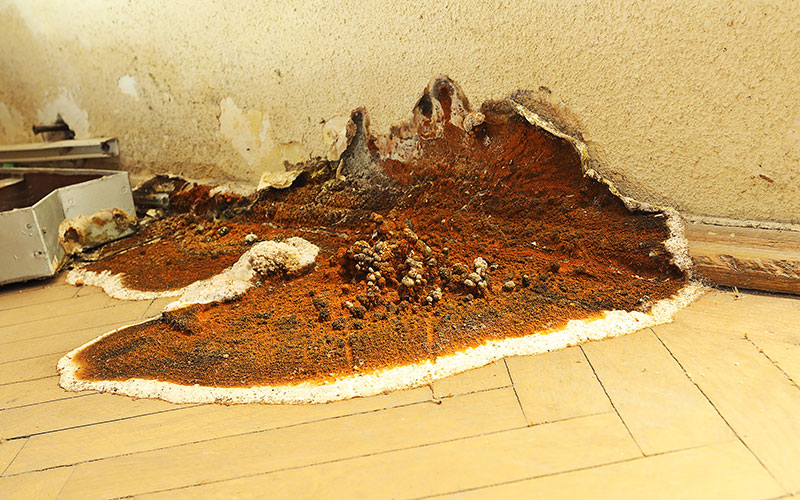
If you own a home in Southern California, you will likely face some level of termite infestation during the time you own your home. The first step in any termite treatment plan is to perform a complete inspection of your property to identify all areas with termite evidence or damages, wood-destroying fungus infections, and any conducive conditions on your property that could lead to future termite infestations and fungus infections. Upon completion of the report, ProTex Pest and Termite Treatments will provide a full termite remedy for your structure which will address the specific needs of your property and can be maintained annually so you will not have to worry about termites in the future.
Termites are social insects consisting of 3 castes: workers, soldiers, and reproductives. The workers are the largest caste and are responsible for the damages caused by termites.
Termites are sometimes mistaken for ants, however, there are some features that can be used to make a positive identification.
Termites
Ants
- Straight antennae
- Broad waist
- 2 sets of equal-sized wings
- Elbowed antennae
- Pinched waist
- Wings are unequal sized
Termites
- Straight antennae
- Broad waist
- 2 sets of equal-sized wings
Ants
- Elbowed antennae
- Pinched waist
- Wings are unequal sized

Drywood Termites
Drywood termites form colonies that are completely located within the wood they use as food. There is no need for an external water source, they are able to get all the moisture they need from the wood they feed on. While their colonies are small (about 10,000 members), a single home will typically have multiple colonies.
Homeowners will typically find the following evidence indicative of drywood termites:
- Piles of fecal pellets
- Swarming reproductives with a red head
- Discarded wings and sawdust where reproductives have created new colonies

Subterranean Termites
Subterranean termites form their colonies in the soil and can forage up to the length of a football field to their food source. These termites will construct mud shelter tubes to conceal their movements and also to keep adequate moisture levels in their environments. Subterranean termites also prefer slightly moist wood and their feeding patterns tend to follow the grain of the wood. Subterranean termite colonies can number in the hundreds of thousands of members and are estimated to eat over a pound of wood per day.
The typical evidence of subterranean termites found by homeowners include:
- Mud shelter tubes along baseboards
- Black swarming reproductives that are about ½” long
- Discarded wings

Fungus Dryrot
Wood destroying fungus/decay is another organism which will cause damage to the wood members of your home. These fungi typically require a moisture source in order to activate their spores. In general, wood with a moisture content greater than 20% is susceptible to damage from fungus. Some common types of wood destroying fungi include brown rot and white rot. During the inspection process, ProTex’s inspectors will identify all wood destroying fungus along with the root cause of the moisture and provide a plan to correct the damages and prevent future damages.